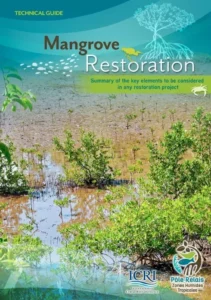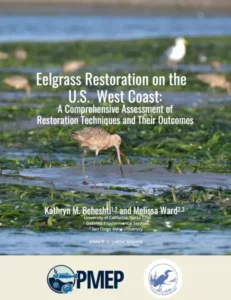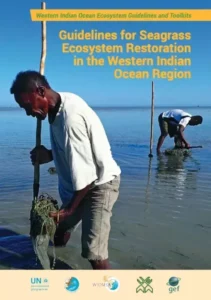Restoration activities are not just taking place in corals. Recently a number of restoration guidelines and management plans have been produced for both mangroves and seagrass beds.
Mangroves
Mangroves are salt-tolerant trees with submerged roots that provide nursery and breeding grounds for marine life, that then migrate to the reef. Mangroves also trap and produce nutrients for food, stabilise the shoreline, protect the coastal zone from storms, and help filter land-based pollutants from run off.
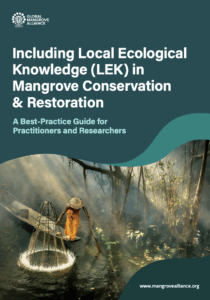
Including Local Ecological Knowledge (LEK) in Mangrove Conservation & Restoration: A Best-Practice Guide for Practitioners and Researchers – 2024
A guide to help mangrove researchers and practitioners include local ecological knowledge in their projects. Local Ecological Knowledge (LEK) is the knowledge, practices, and beliefs gained through extensive personal observation of and interaction with local ecosystems which is shared among local resource users and is typically handed down through generations of local inhabitants, often indigenous. In a first of its kind study, the guide provides a greater understanding into how researchers have included LEK about mangroves specifically and provides best practices for engaging with and harnessing the power of LEK in mangrove restoration and conservation. It also features more than twenty case studies of mangrove projects engaging LEK around the world.
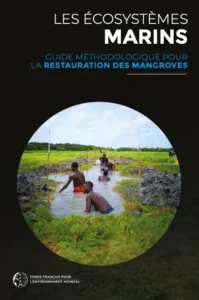
Guide méthodologique pour la restauration des mangroves – FFEM – 2024
The FFEM has supported multiple projects dedicated to the protection, management and restoration of mangroves, as part of its strategy on the Resilience of aquatic ecosystems. To improve their effectiveness and draw lessons from these different programs, the FFEM also supported the mangrove initiative, a transversal capitalization initiative, which brought together practitioners, experts and researchers.
This guide aims to support project leaders for greater efficiency in restoration.
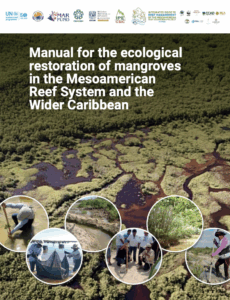
Manual for the ecological restoration of mangroves in the Mesoamerican Reef System and the Wider Caribbean -2023
This manual contributes to strengthening local, national, and regional capacities for ecological restoration and the ecosystem services provided by mangroves in the MAR region and the Wider Caribbean.
Within the framework of the Cartagena Convention and the UN-declared Decade on Restoration, ecological restoration (ER) of mangroves is considered a Nature-based Solution (NBS) that addresses the effects of climate change. This promotes biodiversity conservation and the economic and social well-being of its inhabitants, contributing to the United Nations Sustainable Development Goals.
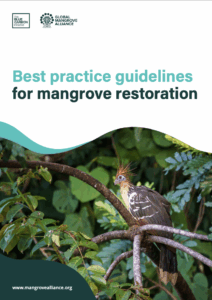
Best Practice Guidelines for Mangrove Restoration – Global Mangrove Alliance – 2023
Now more than ever before there is a massive public and private interest in recovering mangrove ecosystems at scale. With this excitement for mangrove restoration, it is imperative to ensure successful mangrove restoration interventions.
The Best Practice Guidelines for Mangrove Restoration brings together the latest accumulated local and scientific knowledge about mangrove restoration best-practices into one comprehensive resource. The aim is to align mangrove practitioners, NGOs, governments, scientists, industry, local communities and funders around accepted best-practices for science-based and inclusive mangrove restoration.
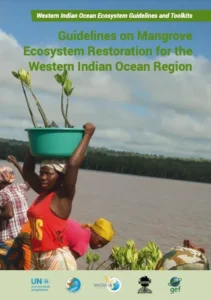
Guidelines on Mangrove Ecosystem Restoration for the Western Indian Ocean Region
These guidelines were produced by the United Nations Environment Programme and the Nairobi Convention Secretariat in 2020. The guide targets communities, civil society, national agencies, and practitioners involved in mangrove conservation activities. The Guidelines provides background information on the mangrove forests and their attributes, as well as the threats they face – both human and natural.
A technical guide to mangrove restoration
The French Tropical Wetlands Network has produced a technical guide on mangrove restoration. The report provides a summary of key elements that should be considered in any mangrove restoration project, based on a review of available literature and practices around the world.
Seagrass
Seagrasses are flowering marine plants that are a key primary producer in the food web. They provide food and habitat for turtles, seahorses, manatees, fish and foraging sea life such as urchins and sea cucumbers and are also a nursery for many juvenile species of sea animals. Seagrass beds are like fields that sit in shallow waters off the beach, filtering sediments out of the water, releasing oxygen and stabilising the bottom.
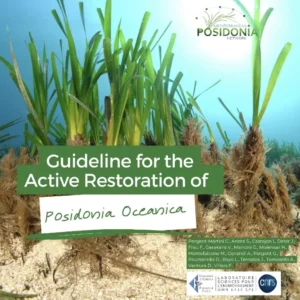
Guidelines for Posidonia Oceanica Restoration – 2024
These guidelines have been produced in the framework of the Mediterranean Posidonia Network, with
the financial support of the French Biodiversity Agency, and the involvement of all the participants of
the Working Group on “Posidonia restoration”.
The main objectives of this restoration guidance are as follows:
• Present and describe case studies showcasing successful Posidonia restoration measures,
particularly those employing nature-based solutions,
• Analyse previous unsuccessful experiments in order to identify the causes of failure,
• Investigate main topics R&D would necessary,
• and by doing this, develop structured Posidonia restoration guidelines involving the successive
steps from the need to restore, the planning, the site selection, the actual restoration measures, the
monitoring and the assessment.
Eelgrass Restoration on the U.S. West Coast: A Comprehensive Assessment of Restoration Techniques and Their Outcomes
Eelgrass is an important foundation species along the U.S. West Coast, supporting a suite of ecosystem services and functions and providing food and shelter for many fishes and invertebrates. In 2018, PMEP published Eelgrass Habitats on The U.S. West Coast: State of the Knowledge of Eelgrass Ecosystem Services and Eelgrass Extent and compiled a geodatabase of eelgrass presence/absence and current and historic extent of eelgrass in 444 estuaries along the U.S. West Coast. In 2020, PMEP commissioned a report to synthesize eelgrass restoration project successes along the U.S. West Coast to identify best practices for eelgrass restoration and mitigation. The authors of the report reviewed and synthesized data from 51 eelgrass restoration (non-mitigation and mitigation) projects from California, Oregon, and Washington. They identified those methods and approaches that resulted in successful restoration.
Seagrass Restoration Handbook
This Handbook was commissioned by the Environment Agency, as part of the cross-agency Restoring Meadows, Marsh and Reef (ReMeMaRe) initiative in 2022. The Handbook provides foundational and practical guidance on the restoration and conservation of seagrasses and seagrass beds in the UK and Ireland with a focus on the Zostera species: common eelgrass (Zostera marina) and dwarf eelgrass (Zostera noltei).
Guidelines for Seagrass Ecosystem Restoration in the Western Indian Ocean Region
These guidelines were produced by the United Nations Environment Programme and the Nairobi Convention Secretariat in 2020. The guidelines aimed at facilitating capacity building and promoting seagrass restoration in the Western Indian Ocean region, they are practical and concise and are designed for adoption and direct application by seagrass restoration practitioners and other interested parties in the region.
Additional Resources
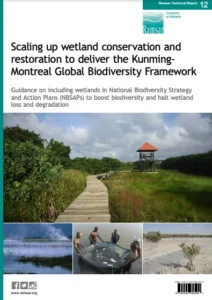
Scaling up wetland conservation and restoration to deliver the KunmingMontreal Global Biodiversity Framework
This report is designed to assist all those involved in updating and delivery of NBSAPs, including those responsible for assessing progress at different scales. It will be useful for government officials (including CBD Focal Points and Convention on Wetlands Focal Points), national level NBSAP Steering Committees, those providing advice and those involved in implementation across sectors at national and global levels. We encourage all parties to share this guidance widely with relevant stakeholders.

